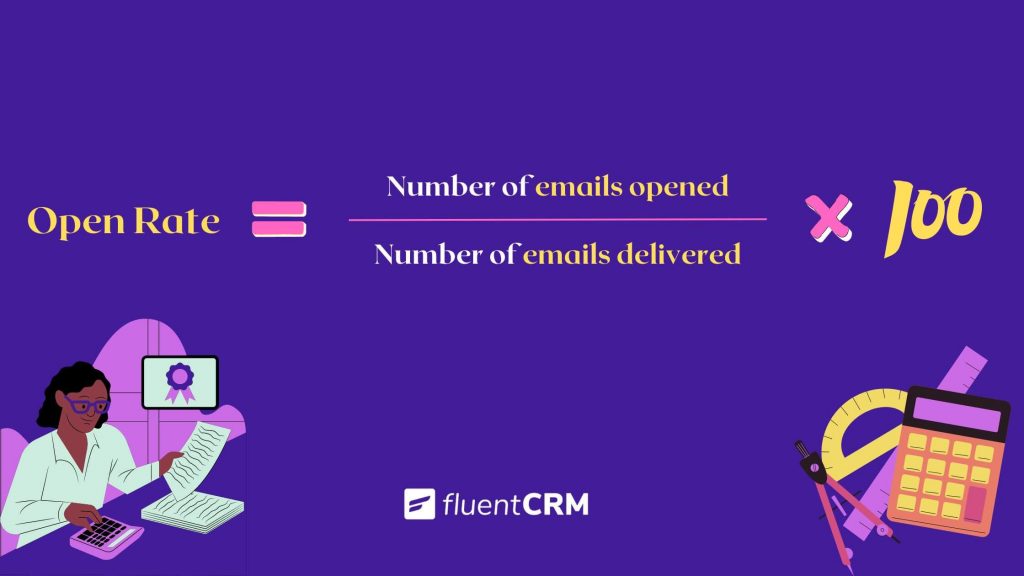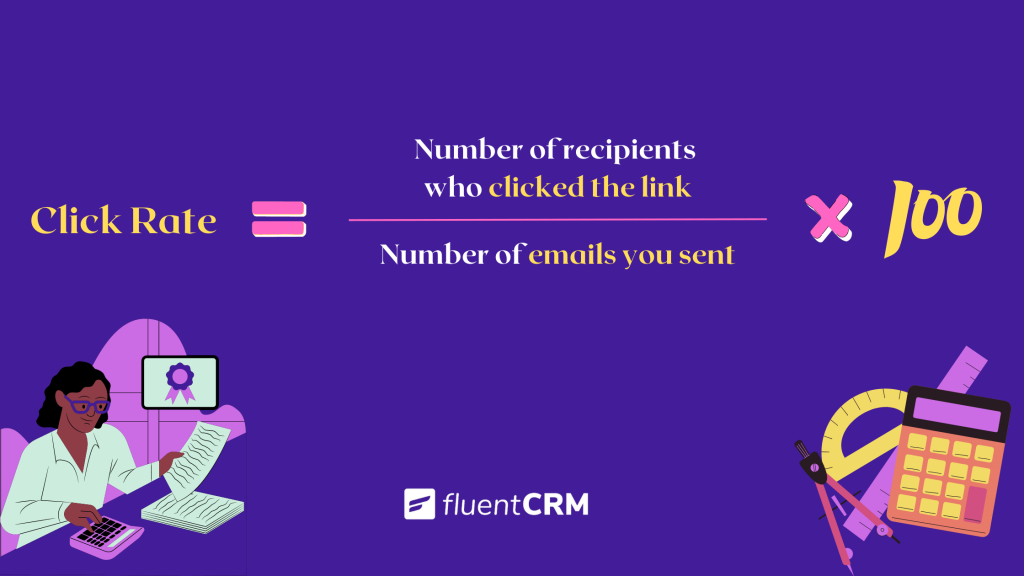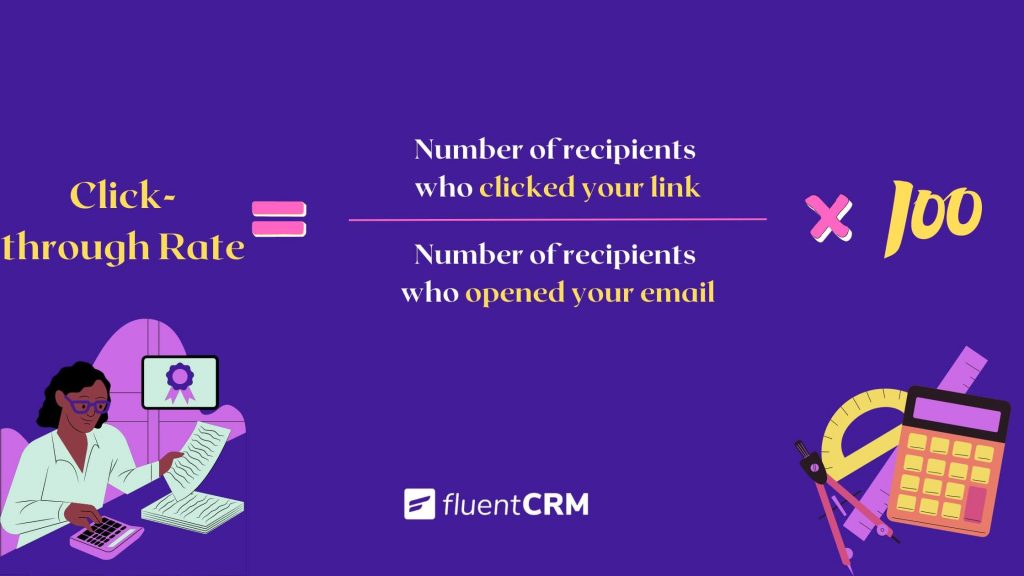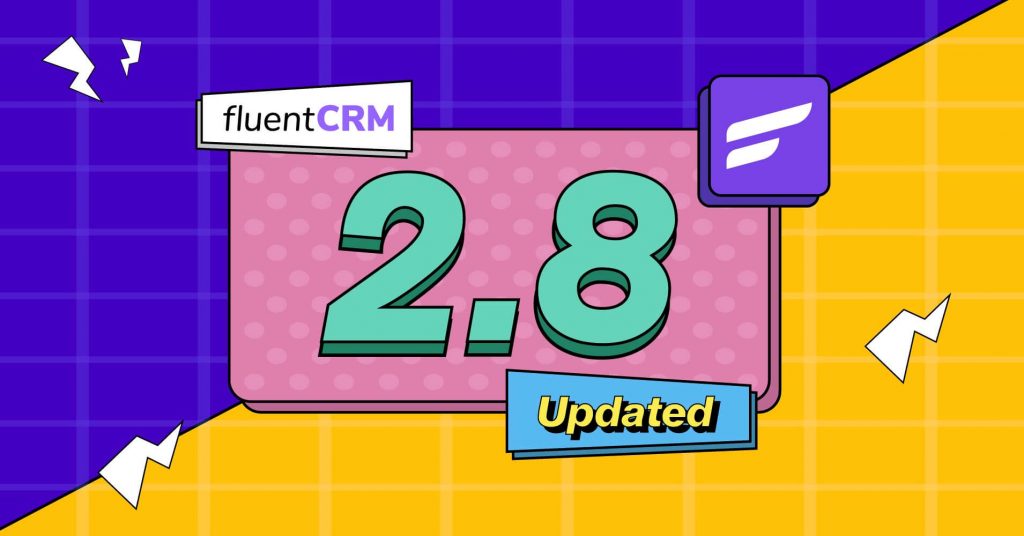
Subscriber growth, ROI, open rate, click rate, click-through rate, email deliverability rate…an email marketer deals with many email marketing metrics. However, having a solid grasp of click rate and click-through rate should be a marketer’s priority.
Why?
New email marketing trends indicate that open rate is no longer a relevant metric to evaluate your email campaign. In comparison, click rate and click-through rate have become two key indicators for measuring an email campaign’s performance.
However, it is very typical to become confused about these metrics, and I was once one of them.
Don’t worry if you’re also puzzled; we’ve got your back! In this article, we’ll tell you all about click rate vs. click-through rate so that you can measure your campaign’s performance more effectively.
Let’s get started!
What is open rate?
How will you convey your hellos to someone if they don’t open their doors to greet you? The same question applies to your email marketing campaigns too!
Whether a customer likes or dislikes your product always comes second because they must become informed first. How can you expect a potential client to become a client if you can’t reach out to them effectively?
The open rate is the metric that shows how many doors your email campaign could potentially open. It shows the percentage of subscribers your email marketing campaign can convince to open their emails.
However, due to technological advancements, open rate is no longer a relevant email marketing metric.
What is click rate?
Reaching out to a potential client is not the end goal of your email marketing campaign. Your goal is to drive revenue by getting those clicks. That’s why it’s essential to determine whether your recipients are interested in your emails or not.
Click rate is the indicator that can assist you in avoiding the risk of ending up as a spammer. It computes the percentage of people who open an email and click on the provided link. By assessing it, you can determine-
- The effectiveness of your email marketing campaign
- Whether people are interested in getting an email from you or not.
- Whether the tone of your email writing attracts your clients or not.
What is click-through rate (CTR)?
Click-through rate (CTR) measures the percentage of clicks received in a campaign to the total number of views or impressions it generates. Here comes the metric that puzzles everyone!
You may think there are no differences between Click Rate (CR) and Click Through Rate (CTR). However, some differences make them two different metrics with distinct calculation methods.
The percentage of people who opened your email and clicked on the link you provided is measured by the click-through rate (CTR). In comparison, click rate (CR) displays the percentage of recipients who clicked on that advertisement.
Please accept my apologies if I have perplexed you more! Move to the following sections to clear up all the confusion.
Click rate vs click-through rate
Although click rate and click-through rate may sound similar, the calculation method, result interpretation, and effectiveness are different. Here’s why:
Method of calculation
Click rate: It measures the number of clicks per 100 emails delivered.
Click-through rate measures the total number of clicks per 100 emails opened.
Result Interpretation
Click rate: It is the numerical factor that determines the overall success of your campaign.
Click through rate: IT can provide detailed information about your ad’s performance.
Effectiveness
Click rate: It can’t clearly determine whether a campaign is working or not.
Click through rate: It can provide detailed information about your campaign’s performance.
Inaccurate Interpretation
Click rate: External factors can impact click rate. CR will even consider those unable to check his inbox for various personal reasons and label them as uninterested in you.
Click through rate: You don’t have to worry about CRT because it only considers openings.
Dive into the Email KPIs You Must Track
How to calculate the open rate, click rate, and click-through rate
Before measuring how your campaign has been performing, you need to understand how each metric is calculated. Here’s how you can do that:
Open Rate

Calculating the open rate is easy math. You have to know the exact number of –
- Emails you sent
- People who opened your email
Divide the number of recipients who opened your email by the number of emails you delivered and multiply by 100.
Example: (Number of people who opened your email/ Total number of emails sent)*100
Click Rate

To calculate the click rate, you have to know the total number of –
- people who clicked your link
- Emails you sent
Divide the number of recipients who clicked the link by the number of emails you sent and multiply by 100. That is the click rate of your campaign.
Example: (Number of people who clicked your link/ Total number of emails sent)*100
Click-Through Rate

To calculate the CTR, you have to know the exact number of –
- People who clicked the provided link
- People who opened your email.
Divide the number of recipients who clicked your link by the number of recipients who opened your email and multiply by 100 to figure out the CTR of your email marketing campaign.
Example: (Number of people who clicked your link/ Total number of people who opened your email)*100.
What is a good click-through rate (CTR)?
According to the email marketing benchmark for 2022, the average CTR for email marketing is 2.3 percent. It is amazingly high when compared to Facebook or other platforms.
Every email marketing expert faces this question at least once in their career. But what is a good click-through rate?
The truth is, there’s no specific answer to this question. Why?
Good click-through rate differs from one industry to another. External factors such as time, location, gender, user behavior, trend, etc., can also impact this metric. Do you know which industry had the maximum CTR during the COVID period?
Shockingly, it was the education industry!
Yes, that’s how email marketing works. While there may be a significant increase in CTR for government and political emails during an election, the accessories and fashion industry may experience the best CTR during a festival.
So, don’t be disheartened if your email isn’t achieving good metrics at this moment. Consider whether your emails are achieving the average KPI metrics. Try to find out the relevant factors that may impact your business and come up with improved ideas.
Why are both click-through rate (CTR) and click rate (CR) important?
Who can doubt the importance of CR and CTR?
They help you understand your email campaign’s performance on a granular level, and that’s why these two metrics are the most influential KPI metrics. Besides, these metrics also help you adhere to email frequency best practices.
Want to know why they are so important?
The importance of click rate(CR)
Click rate indicates whether or not your clients enjoy hearing from you. It indicates how many clients are opening your emails by reading your subject line. Does that ring a bell?
Yes, it tells you how attractive your subject line is.
Segmentation also plays a crucial role in reaching out to your recipients with relevant messages regarding the subject line. A low click rate could indicate that you need to segment your contact list better.
While it’s vital to avoid spamming these days, getting your emails bounced could hurt your email deliverability. A low click rate could also indicate that your emails are bouncing. If that’s the case, click rate also helps you keep your email list clean so that your email deliverability rate stays on top.
The importance of click-through rate(CTR)
The Click-through rate is a more effective metric for calculating the success of your email campaigns. It helps you understand how many of your leads may become customers and allows you to compare your success to competitors.
Since the click-through rate determines how many of your contacts have taken action, it indicates the quality of the email copy. A good CTR also reveals whether your timing was appropriate and whether you could place your call-to-action correctly or not.
Thus, it’s safe to say that the click-through rate is a primary method to measure your email campaign’s performance.
Tips for improving email open, click, and click-through rates
If your recipients don’t open your email, they won’t read it. It’s as simple as that!
In order to achieve the maximum ROI, which is your primary goal for running any email campaign, you need to reach out to the right people with the right message. However, it’s easier to say than to do.
So here are some tips for boosting your email open, click, and click-through rates to meet your email marketing goals eventually:
Write an appealing subject line
An attractive subject line is essential in determining whether your emails bounce back. According to the statistics, 47% of receivers rely on the subject line to open an email. Ensure that your subject line effectively attracts your clients without violating the spam law.
A/B test your email subject line
Never be afraid to experiment with your subject line. A/B testing or split testing determines which subject line performs best across your contact list. To conduct a split test to understand which subject lines are likely to bring out the best outcome.

FluentCRM helps you to A/B test your email subject lines before running any email campaign. This way you can identify the better performing version and start sending your marketing or transactional emails.
Segment your contact list
Not everyone will be interested in reading every email you send. You need to understand which segment of your contact list will be interested in the message you’re sending and personalize your emails accordingly.

In order to run more personalized and targeted campaigns, you can segment your contacts using dynamic tagging in FluentCRM to understand their behavior, preferences, interests, and engagement levels.
Keep your contact list updated
There’s no need to make multiple unsuccessful attempts to evoke the interest of those who aren’t interested in what you’re offering them. It will only irritate them and reduce your email deliverability rate. So don’t be afraid to eliminate inactive contacts. By keeping your contact list updated, you’ll also be able to measure email open rates correctly.
Dive into this article and discover the best email list cleaning services
Ensure content quality in the email body
The body is what convinces the recipients to take action. If your content isn’t appealing enough, the readers won’t take any action. So you should prioritize content quality to earn those click-through rates. A high-quality piece of content can yield great results.
Here’s what we suggest –
- Keep it short and concise. Your readers aren’t likely to read long emails, so get to the point as soon as possible.
- Ensure proper formatting, even if your emails are simple. Use headers and paragraphs to make your emails visually appealing and attractive. Your emails should look beautiful on all devices.
- Aim to inform the readers and engage them with punchlines, visuals, CTA’s, etc.
- Be consistent with your writing tone, font, and visuals. No one likes getting lost while reading an email.
- Spelling and grammatical mistakes can impact your brand negatively. So always proofread your emails before pressing the send button.
- Have a clear CTA. Your email should drive the recipients to only one action. If you include multiple call-to-actions, the recipients might get confused.
- Test your emails. There are several email testing tools available on the internet. Check if your emails are likely to pass the spam check.
Avoid sending too many emails
Even if someone has subscribed to your offerings, that doesn’t mean they would like to hear from you every day. Determine when and how frequently your customers expect emails from you and plan your email marketing accordingly.
Avoid using too many links
While you may want to get people to click on your links, doing so may also confuse your readers. Besides, links often trigger spam filters. So do not include too many links within your emails. Only include genuinely relevant links.
Clear and innovative CTA
This is the essential part of your email. The Call-To-Action button drives the audience to take the action they desire. This is why it should look and sound attractive. Avoid using generic CTA’s such as “Buy Now,” “Read More,” “Learn More,” etc.
Instead, aim for something relevant. For example, if you’re offering a course, a good CTA can be “Start Learning!”

Also, place your CTA where your recipients are most likely to look. Only then your CTA will drive click-throughs to your website.
Wrapping up
Even the most experienced email marketers can get confused at times. Click rate vs. click-through rate is one such example. While these are two different metrics, they are equally important.
Hopefully, after reading this article, you understand the distinction between click rate and click-through rate. If you still have any questions, feel free to drop them in the comment section!
Cheers!









Leave a Reply